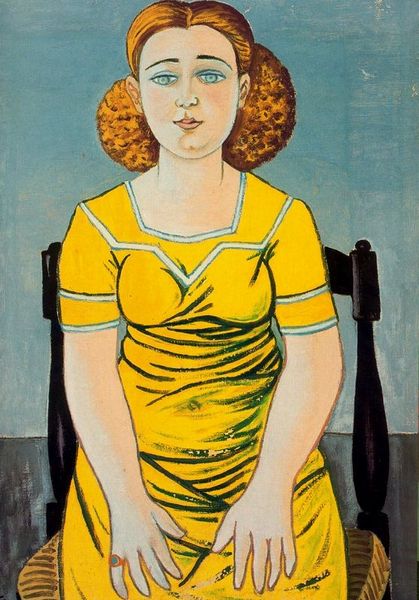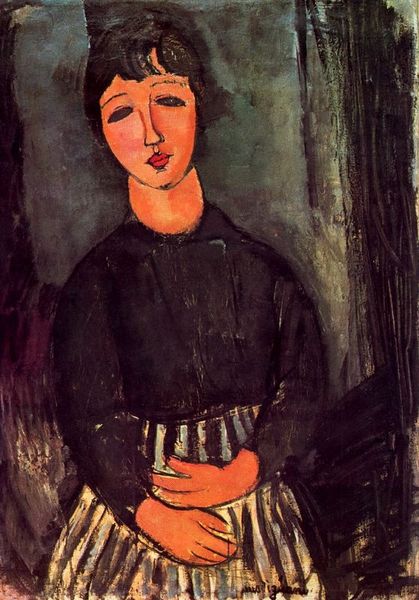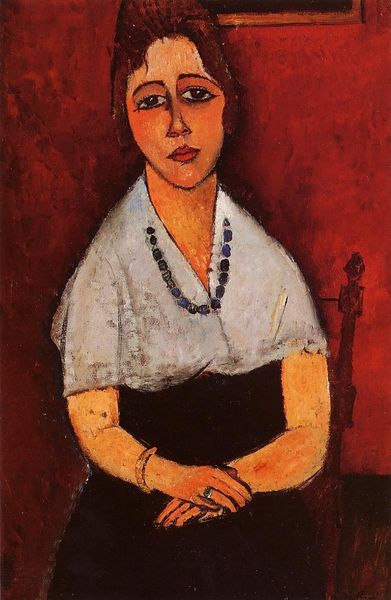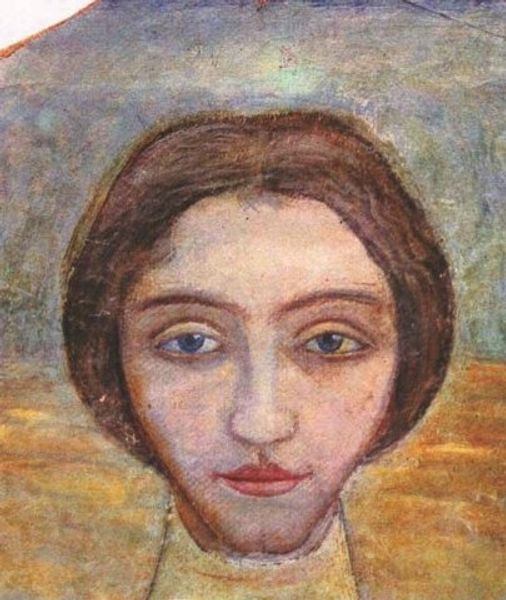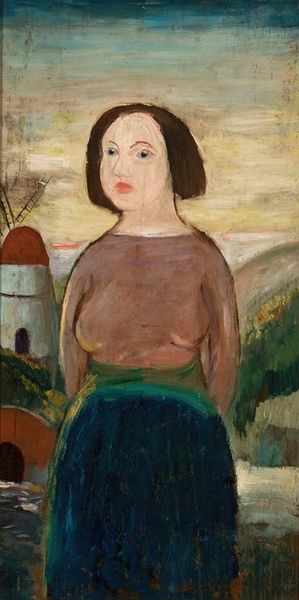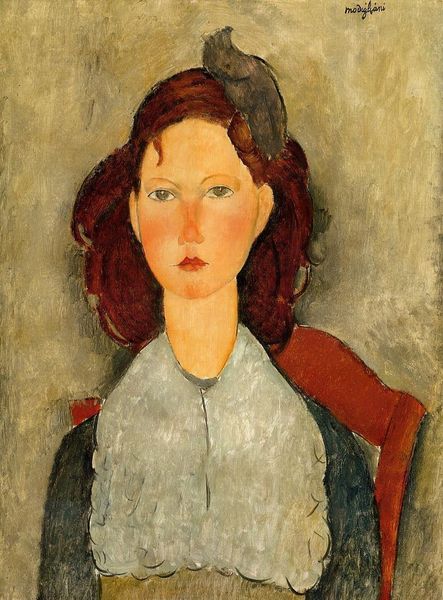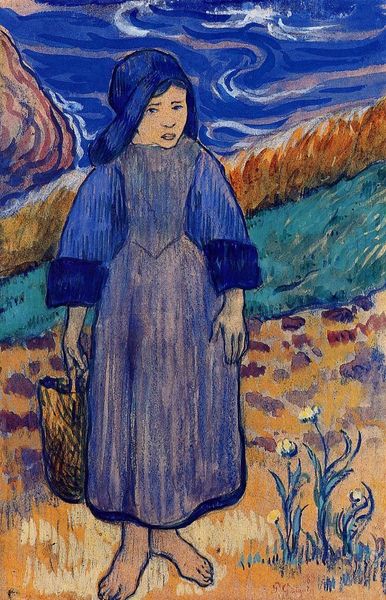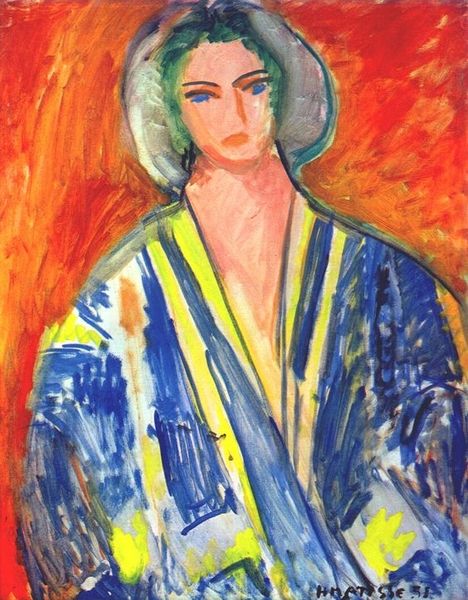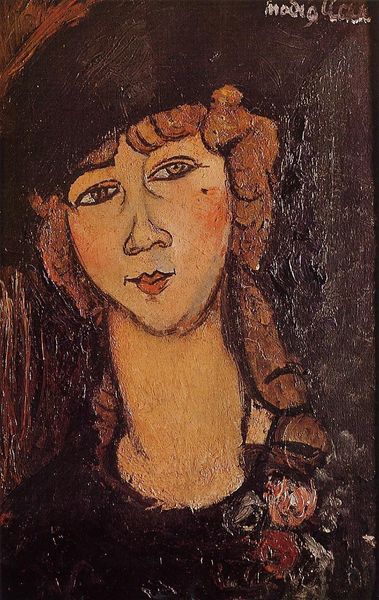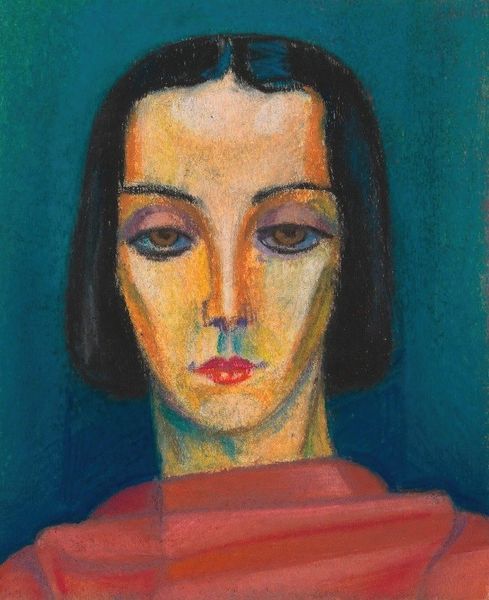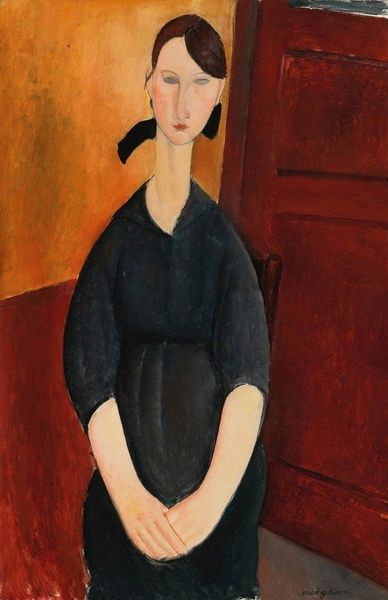
Dimensions: 80 x 64 cm
Copyright: Rafael Zabaleta,Fair Use
Editor: Here we have Rafael Zabaleta’s "Portrait of a Seated Brunette" from 1948, an oil painting showcasing a woman in a blue dress against a landscape. There’s something almost unsettling about the directness of her gaze and the stylized rendering of the background. What formal elements stand out to you? Curator: I’m struck by the geometric tension inherent in the composition. The subject's dress presents these very ordered horizontal and vertical lines that sit in contrast to the swirling forms of the landscape and even her own hair, all of which exist beyond the controlled architectural forms of the chair itself. Notice too how Zabaleta uses colour to advance the painting's geometric quality, using colour to create line. Where does he lead the viewer? Editor: He uses these blue tones in both the figure's dress and also in the depiction of the mountain range in the distance, which guides my eye back and forth and creates depth but it also flattens the image by repeating that particular colour. Curator: Exactly. Consider how the artist's impasto technique also serves this end. It does not allow us to get caught up in depth, for its concern is foremostly with the very real surface of the work. Observe also the lack of atmospheric perspective; even though we know the mountain must be far away, it is painted with an intensity and clarity similar to the figure herself. Editor: So, you’re saying that by denying us traditional perspectival cues, the painting emphasizes its own materiality and flatness, drawing attention to its artifice? Curator: Precisely. The subject of the portrait becomes secondary to the structural investigation of the painting itself, inviting us to ponder the fundamental qualities of painting. What do we take away from this exercise in spatial manipulation? Editor: I initially focused on the figure, but now I see how the seemingly simple portrait is a complex interplay of form and colour. The artist masterfully explores structure and flatness, giving equal weight to line and the textural effect, revealing the painting's artifice. Curator: And that careful formal structure becomes the expressive force of the portrait.
Comments
No comments
Be the first to comment and join the conversation on the ultimate creative platform.
